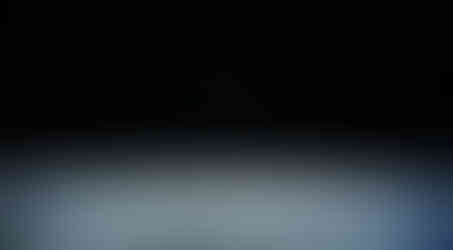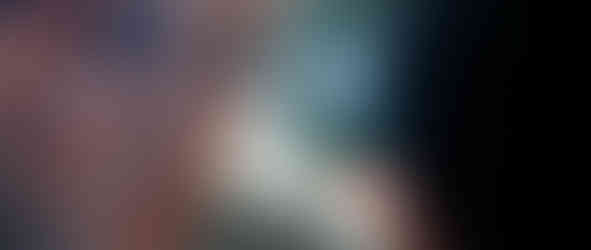Ride along with Neil Armstrong in Chazelle’s space drama “First Man”
- Bill Kelley III

- Jan 29, 2019
- 6 min read
Updated: Feb 19, 2024
4K ULTRA HD REVIEW / HDR FRAME SHOTS
Director Damien Chazelle and cinematographer Linus Sandgren used the 15-perf 65mm IMAX camera to capture the moon landing walk at the Sea of Tranquility, filmed at night with special lights to simulate the sun in a huge Atlanta quarry. The IMAX footage equals 18K in digital resolution and was mastered in 8K and then downconverted for this 4K presentation. Blue planet Earth in the distant sky.
(Click an image to scroll the larger versions)
“FIRST MAN”
4K Ultra HD, Blu-ray, Digital copy; 2018; PG-13 for some thematic content involving peril, and brief strong language; Streaming via Amazon Video (4K), Apple TV (4K), Vudu (4K) YouTube (4K)
Best extra: Commentary with director Damien Chazelle, screenwriter Josh Singer, and editor Tom Cross
THE OSCAR nominees were announced last week and director Damien Chazelle didn’t get a nod for “First Man.” For some in Hollywood it was a shock. Still, it received four nominations in tech categories, for Best Visual Effects, Sound Editing, Production Design, and Sound Mixing. It was clearly snubbed in the Best Score category for Justin Hurwitz (“La La Land”), Chazelle’s Harvard roommate. Variety Magazine said the music was considered a layup win since it took the Golden Globe. Ryan Gosling as astronaut Neil Armstrong and Claire Foy (“The Crown”) as his nervy wife Janet, were both considered long shots.
Two years ago, when Chazelle was still in his early 30s, he won Best Director for “La La Land.” The film was mistakenly declared Best Picture, when the wrong envelope was handed to the presenters, and Barry Jenkins’ “Moonlight” was the real winner.
Chazelle’s musical still won five additional Oscars that night. His first major studio film “Whiplash” (2014) received five Oscar nominations with three wins, for Film Editing, Sound Mixing and Best Supporting Actor.
(1) Research pilot Neil Armstrong flew seven flights in the famed X-15 to the outer edge of the atmosphere. Chazelle and Sandgren used Super 16mm film stock - equal to 2K digital resolution - for all of the cockpit scenes to mimic the look of the 1960s footage. (2) A massive LED high-resolution video wall, 34 feet tall and 100 feet long, on a curved 60-foot partial cylinder provided the light and backdrop for the X-15 and space capsule scenes. (3) Armstrong lands the X-15 in the Mojave Desert at NASA’s High-Speed Flight Station located on Edwards Air Force Base in California. (4&5) Neil has a quiet moment with his daughter Karen who's battling cancer. Karen Armstrong died on January 28, 1962.
Before cameras started rolling for “La La Land,” accomplished producers Wyck Godfrey and Isaac Klausner (“Love, Simon,” “The Fault in Our Stars”) approached Chazelle to direct a story about the first man who stepped onto the moon. After initial hesitation, Chazelle dove into James R. Hansen’s 2005 biography of Neil Armstrong. Hansen became so enthralled in the possible project he decided to join the team as a co-producer. “It struck me in a way it hadn’t before, just how insane this whole operation really was,” Chazelle says during “Shooting for the Moon,” one of eight short featurettes on the 4K disc and streaming sites.
Chazelle hired Oscar-winning screenwriter Josh Singer (“Spotlight”), who spent four years researching Armstrong to craft the true-life story that follows the Korean War veteran with an engineering degree from his test pilot days at Edwards Air Force Base, where he flew the X-15 to the outer edge of the atmosphere; to the Gemini missions that preceded the Apollo program to the moon; to the unfathomable loss he and his wife Janet endured when their two-year-old daughter died from a malignant tumor.
Even before Ryan Gosling played pianist Sebastian in “La La Land,” Chazelle approached him for the role of Armstrong. “We talked about really trying to replicate the reality of it,” says Gosling. “He came at it from his own angle, which was less about the mission and more about the man,” says the actor. “Neil left for answers that he couldn’t really find on Earth.”
The director and cinematographer Linus Sandgren, who won the Oscar for “La La Land,” puts you into Armstrong’s pilot seat, as the camera shakes with every bump. It’s much like the scenes from Philip Kaufman’s space-age epic “The Right Stuff” (1983), but “First Man” takes the violent shaking to the tenth degree — almost to the point of causing motion sickness, with super close-ups as the camera moves in and out of focus. If only they had backed the camera up a smidgen, the audience would have had a welcome breather.
“I wanted every aspect of the film to feel real and lived in and textural,” says Chazelle. “Not just the mission, the space sequences, but life on the ground.”
The director insisted “First Man” should be shot in sequence. He says it’s about the cosmic expanse, but also the day-to-day existence of all the astronauts’ families.







EXTRAS
The featurettes cover all aspects of the production. In “Preparing to Launch” Chazelle says he was surprised the Apollo 11 mission hadn’t been portrayed before. He and Gosling and Foy, as well as Corey Stoll as Buzz Aldrin, Kyle Chandler as NASA chief Deke Slayton, and Jason Clarke as astronaut Ed White, Armstrong’s closet confidant, all felt the timing was just right, since the 50th anniversary of those historical first steps will be this summer.
“Giant Leap in One Small Step” includes interviews with Armstrong’s two sons Rick and Mark, with archival footage over their comments; “Mission Gone Wrong” recreates Armstrong’s test landing of the Lunar Lander training vehicle, which suffered a malfunction and caused a crash that nearly took his life; “Putting You in the Seat” details how they constructed a synchronization system that featured a massive LED high-resolution video wall, 34-feet tall and 100-feet long, on curved 60-foot partial cylinder as the backdrop that was rendered between 4K and 10K resolution, that matched their motion-based flight simulators. It’s the Star Tours ride at Disneyland on steroids.
“Recreating the Moon Landing” highlights the IMAX film camera used to capture the moon landing walk at the Sea of Tranquility, filmed at night with special lights to simulate the sun in a huge Atlanta quarry filled with fine gray powder; “Shooting at NASA,” with complete access to the facilities for unparalleled authenticity; “Boot Camp,” as the cast went through three days of training; and “Reverse Engineering" details recreating the NASA equipment and spacecraft.
During the comprehensive commentary Chazelle, Singer and Cross highlight every element of the production, including the opening sequence as Armstrong skips across the atmosphere inside the hypersonic rocket-powered aircraft. Originally, Gosling provided an Armstrong voiceover with his personal thoughts during the X-15 ride, but it was scratched for the actual communications between Armstrong and the military, which were pulled from transcripts, against the backdrop of the merciless noises from the craft.
Hollywood has had great success recreating exhilarating adventures in space, with biopics “Apollo 13” and “The Right Stuff”; and fictional tales, such as “Gravity” and “The Martian.” Each of those was nominated for Best Picture. “First Man” has its moments of tension and triumph, but Armstrong’s story feels underwhelming, zeroing in on an introspective man of few words. “He did avoid the limelight. He was extremely humble and deeply focused,” says Gosling.
And although it received high praise, with an 89 percent from top critics on Rotten Tomatoes, moviegoers scored it in the mid-60s, with disappointing box office returns.




VIDEO
Chazelle and Sandgren deployed a mixture of three shooting resolutions and two aspect ratios (2.39:1 and 1.78:1 IMAX scene) to capture Armstrong’s story. The entire cockpit sequences were captured on Super 16mm, documentary style, with plenty of natural film grain which matches the historical footage from the era. It was mastered in 6K for its final digital grade and then down-converted to 2K, a perfect match to the lower resolution film stock. When the family moves to Houston, it jumps to 2-perf 35mm equaling to 3K, and the film was pushed one stop during processing for more contrast and grain for the NASA facilities. It was also mastered in 6K and then down-converted to 2K.
For the IMAX sequence on the surface of the moon, it was filmed on the massive 15-perf 65mm camera equal to 18K and mastered in 8K. The higher resolution imagery from the moon surface is stunning in 4K, with unmatched clarity as the home presentation aspect ratio changes from super widescreen to a full screen 1.78:1 image. In IMAX theaters, the aspect ratio went to the square format 1.43:1.
The HDR10 and Dolby Vision toning is natural and balanced with facial toning, less of an orange tint found on the HD versions, while the expanded highlights and shadows provide a more brilliant visual spectacle. The colors are rich and vibrant throughout, except on the lunar surface where the toning is toward the cool side.
AUDIO
With the eight-channel Dolby Atmos soundtrack, you’ll experience every single creak, grunt, and bang, which puts you inside the X-15 and capsule – with added sounds from the height speakers. Hurwitz’s score, with percussion and electronic sounds, including the famed Theremin, first heard in Hitchcock’s “Spellbound,” and Robert Wise’s sci-fi classic “The Day the Earth Stood Still.” You’ll hear it in nearly every music cue, plus Hurwitz recorded metal sounds and water running for added texture.
After repeat views, you’ll come to appreciate the technological marvels of Chazelle's filmmaking, as well as the quieter moments of Armstrong's life.
— Bill Kelley III, High-Def Watch producer


“That’s one small step for man, one giant leap for mankind.” ― Neil Armstrong July 20, 1969




























Comments